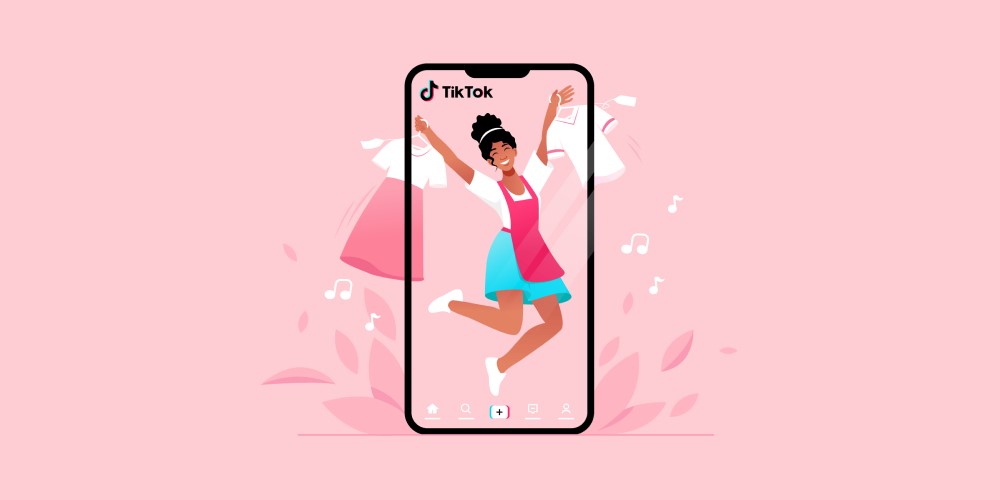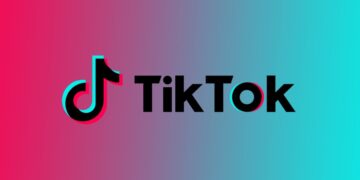Hashtags have become powerful tools for increasing reach, engagement, and visibility on social media. When used strategically, hashtags can amplify your content, connect you with a wider audience, and boost your social media presence. Hashtags serve as a bridge that connects your content to a broader audience. They categorize and organize posts, making it easier for users to discover relevant content. Whether you’re a business, influencer, or individual looking to expand your reach, harnessing the power of hashtags is crucial.
Types of hashtags
Hashtags serve as the social media language that bridges content creators and consumers. Understanding the various types of hashtags empowers social media users to tailor their approach, connecting with diverse audiences, and maximizing the impact of their content across various platforms.
1. Branded hashtags
Branded hashtags are custom-created for a specific brand or business. They play a crucial role in community building and brand recognition. The purpose of branded hashtags is building community identity.
- Creation: Develop a unique hashtag associated with your brand name, tagline, or a campaign.
- Encouragement: Encourage followers to use the branded hashtag when sharing content related to your brand.
- Community bonding: Fosters a sense of community among your audience.
2. Trending hashtags
Trending hashtags are those currently popular and widely used across social media platforms. Leveraging these can increase visibility and participation in ongoing conversations. The purpose of trending hashtags is capitalizing on conversations.
Stay Informed: Regularly monitor trending topics to stay updated on popular hashtags.
Relevance: Participate in trending conversations relevant to your niche or industry.
Discoverability: Increases the discoverability of your content among a broader audience.
3. Industry-specific hashtags
These hashtags are tailored to a specific industry, niche, or community. They help you connect with a more focused and interested audience. The purpose of industry-specific hashtags is niche targeting.
- Precision: Identify and use hashtags directly related to your industry or niche.
- Audience targeting: Attracts a more targeted audience interested in specific topics.
- Community engagement: Enhances engagement within a particular community or interest group.
Campaign hashtags
Campaign hashtags are designed for specific events, promotions, or product launches. They encourage user participation and engagement. The purpose of campaign hashtags is catalyzing engagement.
- Uniqueness: Create a distinctive hashtag for each campaign.
- Promotion: Use the campaign hashtag to promote events, products, or special promotions.
- User participation: Encourage followers to use the campaign hashtag when sharing related content.
5. Community hashtags
Community hashtags bring people together around a shared interest, cause, or experience. They are often used by diverse individuals who contribute to a collective narrative. The purpose of community hashtags is building a shared experience.
- Inclusivity: Appeals to a broader audience interested in a common theme.
- Content curation: Facilitates the curation of user-generated content around a shared interest.
- Conversation hub: Creates a central hub for discussions and interactions.
6. Event hashtags
Event hashtags are specific to live events, conferences, or occasions. They facilitate real-time updates and interaction among attendees and those following the event online. The purpose of event hashtags is live updates and interaction.
- Real-time updates: Provides a channel for sharing live updates during events.
- Audience involvement: Encourages attendees and online participants to contribute to the event narrative.
- Community building: Strengthens the sense of community around a specific event.
7. Emotive Hashtags
Emotive hashtags are used to express feelings, emotions, or personal experiences. They add a human touch to your content and foster authenticity. The purpose of emotive hashtags is conveying emotions and personal expression.
- Personal expression: Allows individuals to share personal experiences or emotions.
- Authenticity: Adds a human touch to content, making it more relatable.
- Storytelling: Conveys a narrative or mood through the use of emotional hashtags.
8. Geo-location hashtags
Geo-location hashtags specify the geographical location of a post. They are beneficial for businesses targeting local audiences or for promoting events in specific locations. The purpose of geo-location hashtags is localized engagement.
- Local targeting: Targets a specific geographical audience.
- Business promotion: Useful for local businesses looking to increase visibility in their community.
- Event promotion: Enhances visibility for events happening in specific locations.
Best practices for using hashtags
Effectively harnessing the power of hashtags requires more than just sprinkling them throughout your posts. The following best practices provide a roadmap for optimizing your hashtag strategy, enhancing visibility, and fostering engagement.
1. Research and select relevant hashtags
- Keyword research:
- Identify keywords related to your content, industry, or niche.
- Utilize tools like Hashtagify, RiteTag, or native platform insights to discover popular and relevant hashtags.
- Competitor analysis:
- Analyze successful competitors in your field.
- Incorporate popular and effective hashtags from your competitors into your strategy.
2. Optimal hashtag count
- Platform variations:
- Tailor your hashtag count to each platform’s norms for optimal results.
- While Instagram may accommodate more hashtags, platforms like Twitter and Facebook may benefit from a more concise selection.
3. Create compelling and clear hashtags
- Clarity is key:
- Ensure your hashtags are clear, concise, and easy to understand.
- Avoid using complex or ambiguous hashtags that might confuse your audience.
- Branding:
- Whenever possible, incorporate your brand name or a recognizable element into your hashtags.
- This reinforces your brand identity and makes your content easily distinguishable.
4. Mix popular and niche hashtags
- Balancing act:
- Combine popular, widely-used hashtags with more niche and specific ones.
- This strategy broadens your reach while targeting a more engaged and interested audience.
5. Monitor and adapt
- Analytics:
- Regularly analyze the performance of your hashtags using built-in analytics tools on social media platforms.
- Identify which hashtags generate the most engagement and adjust your strategy accordingly.
- Stay adaptive:
- Social media trends are dynamic; stay adaptive to changes in hashtag popularity and usage.
- Experiment with new hashtags and retire those that are no longer effective.
6. Use hashtags across platforms
- Consistent branding:
- Maintain consistent branding by using relevant hashtags across different social media platforms.
- This ensures a unified online presence and makes it easier for followers to find and engage with your content.
7. Encourage user participation
- Call to Action (CTA):
- Include a call to action in your captions encouraging followers to use specific hashtags.
- This fosters a sense of community and encourages user-generated content.
- Contests and challenges:
- Run contests or challenges with dedicated hashtags.
- This not only engages your audience but also amplifies your reach as participants share their contributions.
8. Create a branded hashtag campaign
- Campaign specificity:
- Develop campaign-specific hashtags for product launches, events, or promotions.
- Promote the use of these hashtags to create a buzz and track campaign engagement.
- Storytelling:
- Craft a narrative around your campaign through sequential and thematic hashtags.
- This encourages followers to follow along and become part of the unfolding story.
9. Utilize hashtags in stories and bio
- Bio optimization:
- Include relevant hashtags in your social media bio to increase discoverability.
- Use searchable terms related to your brand, industry, or interests.
- Stories engagement:
- Use hashtags in your stories to reach a broader audience.
- Instagram, for example, allows users to explore and engage with stories through relevant hashtags.
10. Research and avoid banned hashtags
- Avoid penalization:
- Stay informed about banned or restricted hashtags on different platforms.
- Using banned hashtags can result in penalization, limiting the visibility of your content.
The art of telling stories through hashtags
Hashtags have transcended their functional role of categorizing content; they’ve become storytellers, weaving narratives that captivate and engage audiences. Crafting a compelling story through hashtags involves strategic planning, creativity, and a keen understanding of your audience.
1. Hashtag campaigns with a story arc
- Sequential hashtags:
- Develop a series of sequential hashtags that unfold a story over time.
- Each hashtag contributes to the narrative, creating anticipation and encouraging followers to follow along.
- Thematic progression:
- Plan the sequence of hashtags to reflect a thematic progression.
- This could be related to a product launch, an event, or a behind-the-scenes glimpse into your brand.
- User participation:
- Encourage user participation by inviting followers to contribute to the story with their own content, using the designated hashtags.
- User-generated content adds layers to the narrative and fosters a sense of community.
2. User-generated content
- Community stories:
- Utilize hashtags to curate and showcase user-generated content.
- Repost and celebrate user content, using the corresponding hashtags to create a mosaic of diverse perspectives.
- Testimonials and experiences:
- Encourage followers to share their experiences or testimonials using a specific hashtag.
- This not only enriches your brand story but also creates a platform for genuine customer voices.
- Challenges and contests:
- Launch challenges or contests with dedicated hashtags.
- The challenges become chapters in your story, with each participant contributing a unique element.
3. Event hashtags
- Live updates:
- Create a unique hashtag for events or live sessions.
- Use the hashtag to provide real-time updates, fostering engagement among attendees and those participating virtually.
- Backstage stories:
- Share behind-the-scenes glimpses using event-specific hashtags.
- This adds depth to the event narrative and humanizes the experience for your audience.
- Audience interaction:
- Encourage attendees to use the event hashtag, creating a collective narrative.
- This turns your audience into storytellers, sharing their perspectives and creating a multi-faceted story.
4. Emotive hashtags
- Expressive storytelling:
- Use emotive hashtags to convey feelings, moods, or personal experiences.
- These hashtags add a layer of authenticity to your storytelling, connecting with followers on a more personal level.
- Seasonal or trend-based emotions:
- Align emotive hashtags with seasonal or trend-based emotions.
- This allows your narrative to resonate with the current sentiments of your audience.
- Interactive polls and questions:
- Integrate emotive hashtags into interactive elements like polls or questions.
- This invites followers to share their emotions and actively contribute to the ongoing story.
5. Brand narratives in hashtags
- Foundational brand hashtag:
- Establish a foundational brand hashtag that encapsulates your brand essence.
- Consistently use this hashtag across various campaigns and content to reinforce your brand identity.
- Highlighting milestones:
- Celebrate brand milestones with specific hashtags.
- Whether it’s an anniversary or a significant achievement, these hashtags become chapters in your brand’s evolving story.
- Product stories:
- Create hashtags specifically for product stories.
- Share the journey from product inception to launch, involving your audience in the creation process.
6. Story recap and reflection hashtags
- Reflective endings:
- Conclude a storytelling campaign with a reflective hashtag.
- This allows you to summarize the story, express gratitude to your audience, and gather feedback.
- Highlight reels:
- Compile highlights of the story into a recap, using a dedicated hashtag.
- This gives latecomers a chance to catch up and provides a comprehensive overview.
- Encourage feedback:
- Encourage followers to use a feedback hashtag.
- This opens a dialogue, allowing your audience to share their thoughts and become collaborators in shaping future narratives.
Overcoming challenges and pitfalls
While hashtags can be powerful tools for expanding reach and engagement on social media, navigating the landscape comes with its own set of challenges and potential pitfalls. To ensure the success of your hashtag strategy, it’s essential to be aware of these challenges and adopt strategies to overcome them effectively.
1. Overusing hashtags
- Quality over quantity:
- Challenge: The temptation to use an abundance of hashtags can lead to cluttered and less impactful content.
- Solution: Prioritize quality over quantity. Choose a focused set of relevant hashtags that genuinely align with your content.
- Platform-specific limits:
- Challenge: Different platforms have varying limits on the number of hashtags allowed per post.
- Solution: Tailor your hashtag count according to platform norms. While Instagram may accommodate more, platforms like Twitter and Facebook benefit from a more concise selection.
2. Ignoring platform-specific guidelines
- Platform rules:
- Challenge: Each social media platform has its own guidelines for hashtag usage.
- Solution: Stay informed about and adhere to platform-specific rules to prevent penalization or suppression of your content.
- Inappropriate usage:
- Challenge: Using hashtags inappropriately or exploiting trending topics can harm your brand image.
- Solution: Ensure your hashtags are contextually relevant and respectful. Avoid jumping on unrelated trends solely for visibility.
3. Using irrelevant hashtags
- Relevance matters:
- Challenge: Using hashtags that aren’t directly related to your content can lead to disengagement.
- Solution: Prioritize relevance. Choose hashtags that accurately represent the essence of your post and resonate with your target audience.
- Avoiding spammy behavior:
- Challenge: Using overly popular or generic hashtags can make your content appear spammy.
- Solution: Balance popular and niche hashtags. Aim for a mix that broadens your reach while maintaining specificity and authenticity.
4. Inconsistent branding
- Brand identity:
- Challenge: Inconsistent use of hashtags can dilute your brand identity.
- Solution: Establish a core set of branded hashtags and use them consistently across platforms. This reinforces brand recognition and cohesion.
- Changing campaign hashtags too frequently:
- Challenge: Frequently changing campaign-specific hashtags may confuse your audience.
- Solution: Use consistent campaign hashtags for the duration of your campaign. If a change is necessary, communicate it clearly to your audience.
5. Lack of monitoring and adaptation
- Ignoring analytics:
- Challenge: Failing to analyze hashtag performance can result in missed opportunities for optimization.
- Solution: Regularly monitor analytics provided by social media platforms. Identify top-performing hashtags and adjust your strategy accordingly.
- Failure to adapt to trends:
- Challenge: Ignoring emerging trends or sticking to outdated hashtags may limit your reach.
- Solution: Stay adaptive to changes in hashtag popularity and usage. Experiment with new trends and retire hashtags that lose effectiveness.
6. Avoiding banned hashtags
- Risk of penalization:
- Challenge: Using banned or restricted hashtags can lead to penalization.
- Solution: Stay informed about platform guidelines and regularly check for banned or restricted hashtags. Avoid using them to prevent negative consequences.
- Vetting hashtags:
- Challenge: Neglecting to vet hashtags before use may result in unintentional association with controversial content.
- Solution: Vet hashtags thoroughly to ensure they align with your brand values and won’t lead to unintended consequences.
7. Failure to encourage user participation
- Lack of engagement:
- Challenge: Not actively encouraging users to use specific hashtags may result in missed opportunities for user-generated content.
- Solution: Include clear calls to action in your captions, encouraging followers to use designated hashtags. Run contests or challenges to boost engagement.
Conclusion
Mastering the art of using hashtags involves continuous refinement, blending research, adaptability, and creativity. By integrating a thoughtful hashtag strategy into your social media approach, you can significantly elevate your reach, connect with your target audience, and establish a compelling brand or personal narrative. Remember, it’s not merely about visibility; it’s about crafting a narrative that resonates, fostering lasting connections in the dynamic landscape of social media.

































































































































































































